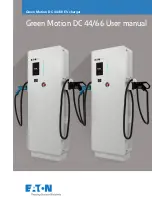
EXAMPLE:
R
= Construction code
– "R" means radial construction, or
– "D" means diagonal or bias construction
15, 16, 18
= Rim diameter in inches (in)
Service Description:
95
= Load Index
– A numerical code associated with the maximum load a tire can carry
H
= Speed Symbol
– A symbol indicating the range of speeds at which a tire can carry a
load corresponding to its load index under certain operating conditions
– The maximum speed corresponding to the speed symbol should only
be achieved under specified operating conditions (i
.
e
.
, tire pressure, ve-
hicle loading, road conditions, and posted speed limits)
Load Identification:
Absence of the following load identification symbols on the sidewall of the tire indicates
a Standard Load (SL) tire:
•
XL = Extra load (or reinforced) tire, or
•
LL = Light load tire or
•
C, D, E, F, G = Load range associated with the maximum load a tire can carry at a speci-
fied pressure
Maximum Load
– Maximum load indicates the maximum load this tire is designed to
carry
Maximum Pressure
– Maximum pressure indicates the maximum permissible cold
tire inflation pressure for this tire
Tire Identification Number (TIN)
The TIN may be found on one or both sides of the tire, however, the date code may
only be on one side
.
Tires with white sidewalls will have the full TIN, including the date
code, located on the white sidewall side of the tire
.
Look for the TIN on the outboard
side of black sidewall tires as mounted on the vehicle
.
If the TIN is not found on the out-
board side, then you will find it on the inboard side of the tire
.
EXAMPLE:
DOT MA L9 ABCD 0301
DOT
= Department of Transportation
– This symbol certifies that the tire is in compliance with the U
.
S
.
Department
of Transportation tire safety standards and is approved for highway use
MA
= Code representing the tire manufacturing location (two digits)
L9
= Code representing the tire size (two digits)
ABCD
= Code used by the tire manufacturer (one to four digits)
MAINTAINING YOUR VEHICLE
140
















































